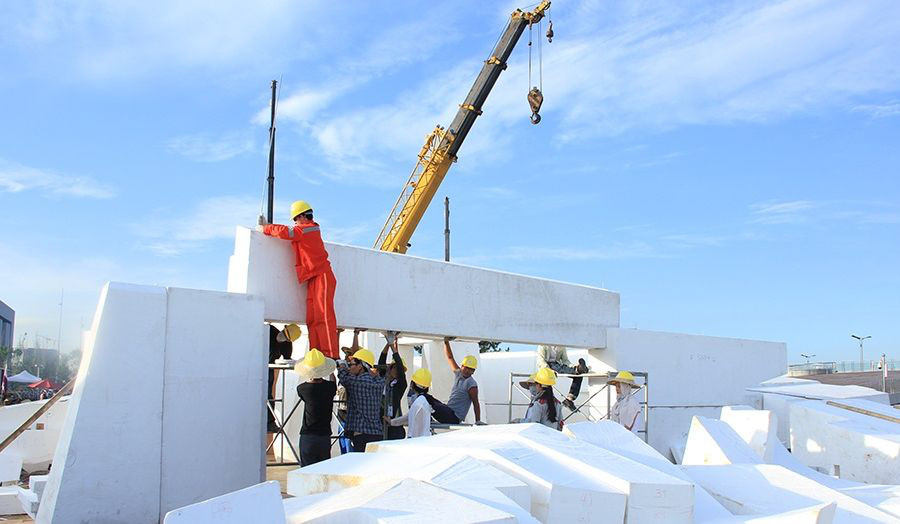Unit Brief
Material Evolutions II; Gardening the City
“The ‘Green Technology’[1] race is the space race of our time”
–Stephen Chu US Secretary of Energy and Nobel Prize winner in physics
Unit04 is promoting the deployment of alternative material strategies, generative techniques, environmental systems and fabrication tools to evolve new ways of producing buildings capable of regenerating [2] our rapidly changing environment. We are pursuing new forms of architectural production and “green technology” that are capable of a positive environmental impact without compromising design quality and sensibility.
The development of new materials, industrial, fabrication and production techniques as well as new tools is reciprocally linked to architectural and urban development. What made the London 19th century mass housing explosion possible, was the exploitation of a local resource/material (clay), a tool deployed locally (kiln) resulting in a reduction of transport and a relatively inexpensive, robust and plentiful building material allowing for large scale construction and the evolution of a new housing type (the terrace house).
We are developing a counter proposal for London housing by exploiting locally available resource/material (what is produced and possibly harvested locally or easily deployed and transported), a tool deployed locally (kiln or other manufacturing equipment) resulting in a reduction of transport and a relatively inexpensive, robust and plentiful building material allowing for construction at a large scale with the intention of developing a new housing type (to be defined and designed)
Unit04 is revisiting Sir Ebenezer Howard’s Garden City [3] model and the Australians Bill Mollison’s and David Holmgren’s idea of Permaculture [4] as an interesting alternative for London growth with the intent of developing the Garden City of the 21stcentury. As in Howard’s vision for the Garden City consisting of two types of urban development one larger, denser and connected to mass transit and the other smaller and less dense we are going to develop two urban typologies and their associated housing types. These two scenarios are as follows:
1. Super high-density urban centers connected to mass transit where the development has to be vertical necessitated by land values (5th years).
2. High-density low-rise development (4th years).
The necessity of a new Thames Barrier, the new deep sea port at Tilbury and the possibility of a new Thames Gateway airport is resulting in one of the largest urban regeneration projects in Europe. Our area of operation is the low lying flood plains in the South East are made available for urban expansion to sustain and finance major public infrastructural projects already being planned.
Unit04 continues its engagement with live projects and full scale production of prototypes that can be tested, produced, deployed and adapted for a range of conditions. We are looking for design capable of producing more electricity than it consumes, recycling waste and water, encouraging biodiversity and urban agriculture as well as forming forward looking communities and homes.
By the appropriation, invention and development of ‘green technology’ Unit04 wishes to actively participate in regenerating our degrading environment without compromising design quality and sensibility. Unit04 is continually seeking material output as the ultimate gauge of success of design work seeking to turn design ideas to invention and invention to innovation.
[1] ’Green Technology’ encompasses a continuously evolving group of methods and materials, from techniques for generating energy to new productions methods.
[2] Re-generation implies that we are helping to re-build our ecosystems and planet as opposed to merely sustaining the status quo of our environmental situation.
[3] The Garden City movement is a method of urban planning that was initiated in 1898 by Sir Ebenezer Howard in the United Kingdom. Garden cities were intended to be planned, self-contained communities surrounded by "greenbelts", containing proportionate areas of residences, industry and agriculture.
[4] Permaculture is a branch of ecological design, ecological engineering, and environmental design that develops sustainable architecture and self-maintained agricultural systems modelled from natural ecosystems.

Details
| Course | Professional Diploma in Architecture - RIBA Part 2 |
|---|---|
| Tutors | Jonas Lundberg Nate Kolbe Eva Diu |
